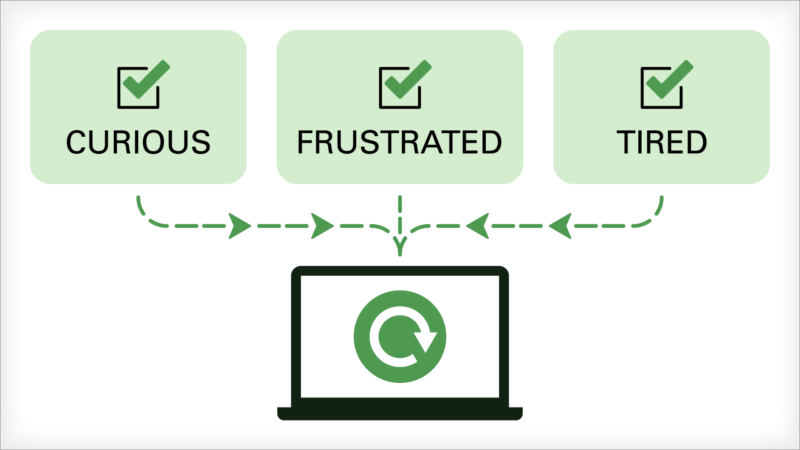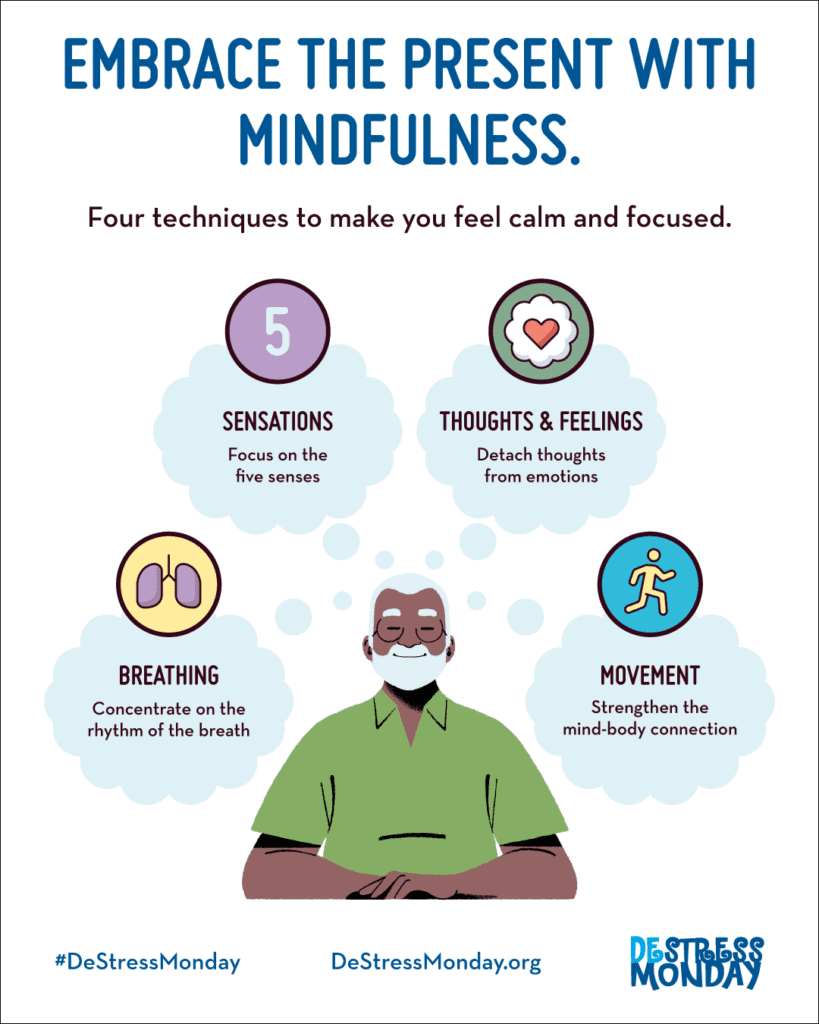An Introduction to Mindfulness
Emails, text messages, notifications, pings, alerts, and advertisements are all vying for our attention, so much so that there’s rarely a moment absent of some sort of technological intervention. The consequence of this steady stream of distractions is that we forget to enjoy the sights, sounds, smells, and experiences of the present moment. We forget to be mindful.
But mindfulness is more than just a greater sense of awareness; an individual can use this heightened state of focus to bring about positive behavior change. This Monday, see how you can incorporate different forms of mindfulness into your weekly routine.
What is Mindfulness?
Mindfulness is a form of meditation that involves concentrating intensely on the sensations around you. By bringing focus to one’s feelings, thoughts, and bodily sensations, mindfulness can be used to achieve a state of calm without self-judgement.
Over 40 years of research has demonstrated the power that mindfulness can have on personal health and wellbeing, and this careful analysis has moved the concept of mindfulness from a well-respected theory to a legitimate response to illness, stress, and pain management. Studies suggest that developing mindfulness can help individuals reduce feelings of anxiety, improve mental outlook, and strengthen memory.
Types of Mindfulness Practices
Mindfulness is an over-arching idea that can be applied to different meditation practices. DeStress Monday focuses on four mindfulness techniques that can be used throughout the day to foster positivity, calm, and focus.
Mindfulness of Breath
Concentrating on the flow of breath is a fundamental mindfulness technique. By focusing on each inhale and exhale, a person can slow down their heart rate, while reducing feelings of stress, anxiety, or anger. To practice mindful breathing, simply place awareness on the breath, as you inhale and exhale through the nose. When thoughts arise, don’t cling to them, just let them go and return focus to the breath. You can practice mindful breathing for as little as 30 seconds to 20 minutes, but the calming effects can be felt almost instantaneously.
Mindfulness of Sensations
Mindfulness of sensations involves focusing on the sights, smells, sounds, tastes, and textures of the present moment. These sensations bring richness to life, and by concentrating on them, one can effectively quiet or calm disruptive or negative thinking. Mindfulness of sensations can be practiced throughout the day. Any activity— showering, handwashing, eating, making the bed—is an opportunity to practice mindfulness of sensations by grounding oneself in the full sensory experience of the moment.
Mindfulness of Thoughts and Feelings
Using mindfulness of thoughts and feelings is a proven way for an individual to increase self-regulatory behavior and detach oneself from sources of stress and negativity. By observing thoughts without self-judgement, the emotions associated with those feelings can be allowed to fall away. As emotions are released as soon as they materialize, a person is able to more proactively decide where to focus his or her energy and attention.
Mindfulness of Movement
Mindful movement brings awareness to the body in order to relieve stress, expend energy, and improve focus. It’s important to note that mindful movement isn’t a fitness regimen, but rather a way to strengthen the mind-body connection through the alignment of breath, thought, and physical activity. Examples of mindful movement include guided stretching, yoga, tai chi, and some forms of dance.


Refresh Every Monday with Our Check-Up Tool
Our interactive Healthy Monday Refresh Check-Up Tool is designed to help you assess how you’re feeling every Monday and see options for actions you can take to move toward you wellness goals.
